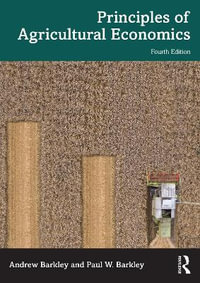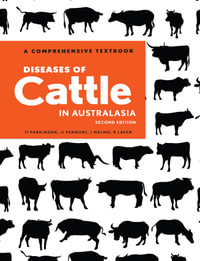| Setting Up Milestones: Sneath on Adanson and Mayr on Darwin | p. 1 |
| Abstract | p. 1 |
| Acknowledgments | p. 14 |
| References | p. 15 |
| Launching the Society of Systematic Zoology in 1947 | p. 19 |
| Abstract | p. 19 |
| Introduction | p. 19 |
| Organizing the Society: 1946-1947 | p. 20 |
| Analysis: Themes Motivating a Sense of Need | p. 25 |
| Serving the Work of Day-to-Day Taxonomy | p. 25 |
| Advancing the Principles of Systematic Zoology | p. 27 |
| Offering a Service Role to Those Needing Taxonomic Expertise | p. 30 |
| Representing Systematics within the Sciences | p. 31 |
| Strong Support for Schmitt and Wharton | p. 34 |
| Where Does Blackwelder's Narrative Fit? | p. 38 |
| Conclusion | p. 43 |
| Acknowledgments | p. 44 |
| Archival Collections | p. 44 |
| References | p. 44 |
| Explanations in Systematics | p. 49 |
| Abstract | p. 49 |
| Introduction | p. 49 |
| Fields within Evolutionary Biology | p. 50 |
| Popper and Historical Analyses | p. 51 |
| Explanations in Science | p. 52 |
| Nomological-Deductive Explanations (N-DEs) | p. 52 |
| Historical-Narrative Explanations (H-NEs) | p. 53 |
| Degree of Confidence of Historical-Narrative Explanations | p. 54 |
| Conclusions | p. 55 |
| References | p. 56 |
| What Happens When the Language of Science Threatens to Break Down in Systematics: A Popperian Perspective | p. 57 |
| Abstract | p. 57 |
| Introduction | p. 57 |
| The Language of Science | p. 58 |
| The Problem of Induction | p. 61 |
| Universal Propositions and Singular Statements | p. 63 |
| Individuals | p. 65 |
| Testability in Systematics | p. 67 |
| Basic Statements | p. 67 |
| Universal versus Singular (Basic) Statements in Systematics | p. 69 |
| Parsimony as a Method of Systematics | p. 73 |
| Parsimony, Hierarchy and ad hoc Auxiliary Hypotheses | p. 75 |
| The Test of Congruence | p. 81 |
| Likelihood | p. 84 |
| Sophisticated Methodological Falsificationism and the Sociology of Science | p. 86 |
| The Basic Problem of Systematics | p. 89 |
| Synthesis | p. 90 |
| Acknowledgments | p. 92 |
| References | p. 92 |
| An Exercise in the Logic of Phylogenetic Systematics | p. 96 |
| Explanation | p. 96 |
| Justification | p. 96 |
| Descent | p. 97 |
| The True Tree | p. 99 |
| Hennig's Phylogenetic Systematics Brought Up to Date | p. 101 |
| Abstract | p. 101 |
| Introduction | p. 101 |
| What is Missing from Hennig's Original Methodological Repertoire? | p. 102 |
| Character Weighting | p. 103 |
| The Criterion of Parsimony | p. 104 |
| Outgroup Comparison | p. 105 |
| Unrooted Topologies | p. 106 |
| Distance Methods | p. 106 |
| Phylogenetic Cladistics: The Synthesis between Hennig's Method and Numerical Cladistics | p. 107 |
| Phenetic Cladistics: Elegant Analyses with Many Sources of Errors | p. 109 |
| The Necessity of a priori Weighting: Why is Character Quality the Same as Probability of Homology? | p. 113 |
| A Theoretical Basis for a priori Character Weighting | p. 115 |
| Discussion | p. 118 |
| Acknowledgments | p. 122 |
| References | p. 122 |
| Cladistics: Its Arrested Development | p. 127 |
| Abstract | p. 127 |
| Introduction | p. 127 |
| Numerical Taxonomy | p. 127 |
| Paleontology | p. 127 |
| Cladistics | p. 128 |
| Two Dinosaurs and the Bird | p. 129 |
| Paleontology of the Parts | p. 130 |
| Spezialisationskreuzungen or Its Chevauchement | p. 131 |
| Lungfishes : From Dollo to White to Miles' Stones | p. 132 |
| Heterobathmie | p. 133 |
| Merkmalsphylogenie | p. 133 |
| Optimization as Idealistic Morphology | p. 134 |
| Geography: Where Progression Would Rule | p. 134 |
| More on Optimization | p. 135 |
| Biggest Is Best Is Truest Is Biggest Is ... | p. 138 |
| The Buddha and the Bonaparte | p. 139 |
| Acknowledgments | p. 140 |
| References | p. 140 |
| Systematics and Paleontology | p. 149 |
| Abstract | p. 149 |
| Introduction | p. 149 |
| Nineteenth Century | p. 150 |
| Early Twentieth Century | p. 159 |
| Mid-Twentieth Century | p. 165 |
| Late Twentieth Century | p. 168 |
| Current Debates | p. 171 |
| Conclusions | p. 175 |
| Acknowledgments | p. 175 |
| References | p. 175 |
| Parsimony and Computers | p. 181 |
| Abstract | p. 181 |
| Historical Introduction | p. 181 |
| The Reconstruction of Evolution | p. 182 |
| The Principle of Minimum Evolution | p. 183 |
| The Influence of Traditional Procedures | p. 185 |
| Maximum Likelihood | p. 186 |
| Extremum Principles in Science | p. 186 |
| Epilogue | p. 188 |
| References | p. 188 |
| Homologues and Homology, Phenetics and Cladistics: 150 Years of Progress | p. 191 |
| Abstract | p. 191 |
| Introduction | p. 191 |
| Owen's Milestone: Homologues and Homology, Analogues and Analogy | p. 192 |
| Homologues and Analogues | p. 192 |
| Homology and Analogy | p. 193 |
| Homoplasy | p. 198 |
| Patterson's Milestone: Taxic and Transformational Homology | p. 202 |
| Recognizing Homologues and Transformational Homology | p. 202 |
| Recognizing Taxa and Taxic Homology | p. 204 |
| The Numerical Representation of Homology | p. 206 |
| The Analysis of Homologues | p. 209 |
| Transformational Homology | p. 209 |
| Taxic Homologues | p. 210 |
| Nelson's Milestone: Homology as Relationship | p. 211 |
| Discussion | p. 214 |
| Acknowledgments | p. 215 |
| References | p. 216 |
| From Dispersal to Geographic Congruence: Comments on Cladistic Biogeography in the Twentieth Century | p. 225 |
| Abstract | p. 225 |
| Introduction | p. 225 |
| External Forces | p. 227 |
| Global Plate Tectonics | p. 227 |
| Cladistics | p. 229 |
| Internal Forces | p. 232 |
| Historical Biogeography | p. 233 |
| Discussion | p. 248 |
| Narrative Scenarios | p. 248 |
| Analytical Methods | p. 249 |
| Conclusion: The Future | p. 251 |
| Acknowledgments | p. 251 |
| Reference | p. 251 |
| The Fall and Rise of Evolutionary Developmental Biology | p. 261 |
| Abstract | p. 261 |
| Introduction | p. 261 |
| What is Evolutionary Developmental Biology? | p. 262 |
| Merging Together and Drifting Apart | p. 263 |
| The Rise of Evolutionary Developmental Biology | p. 264 |
| Technical Advances | p. 265 |
| Molecular Phylogenetics | p. 268 |
| Discovery of Conserved Developmental Genes | p. 269 |
| From Pairwise Comparison to Evolutionary Biology: 1990 Onward | p. 270 |
| Conclusions | p. 271 |
| Acknowledgments | p. 272 |
| References | p. 272 |
| Index | p. 277 |
| Series List | p. 287 |
| Table of Contents provided by Rittenhouse. All Rights Reserved. |
























